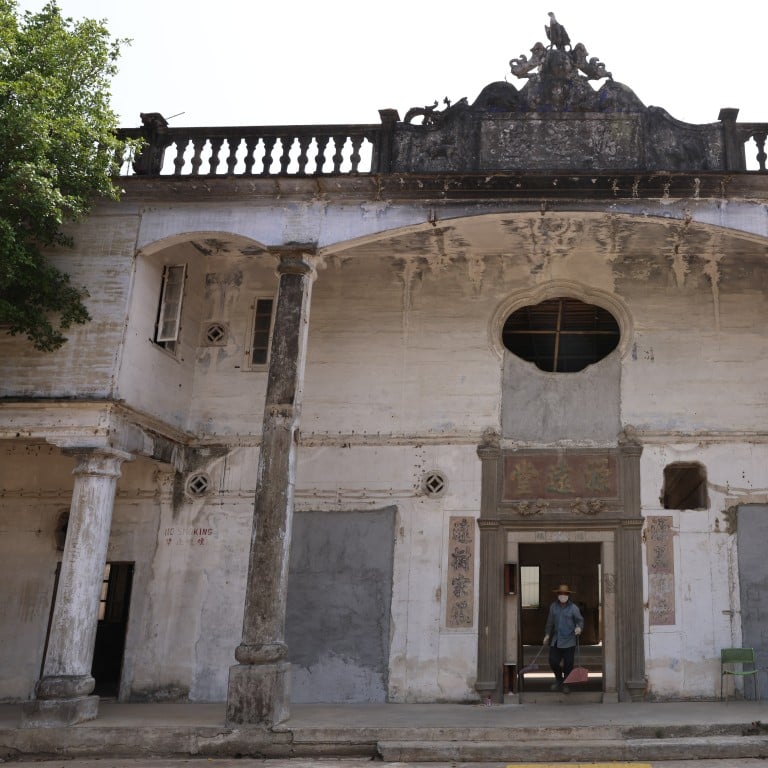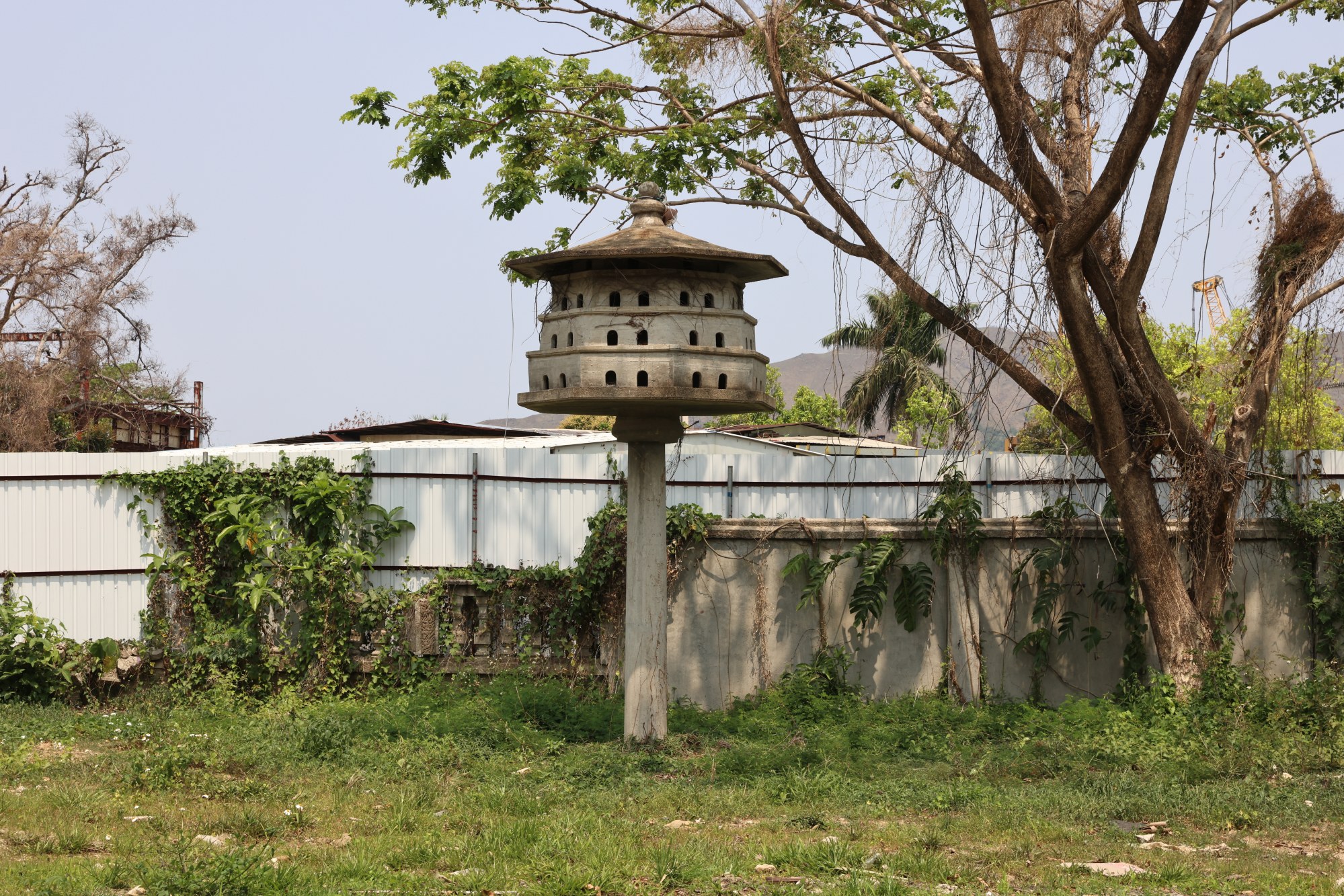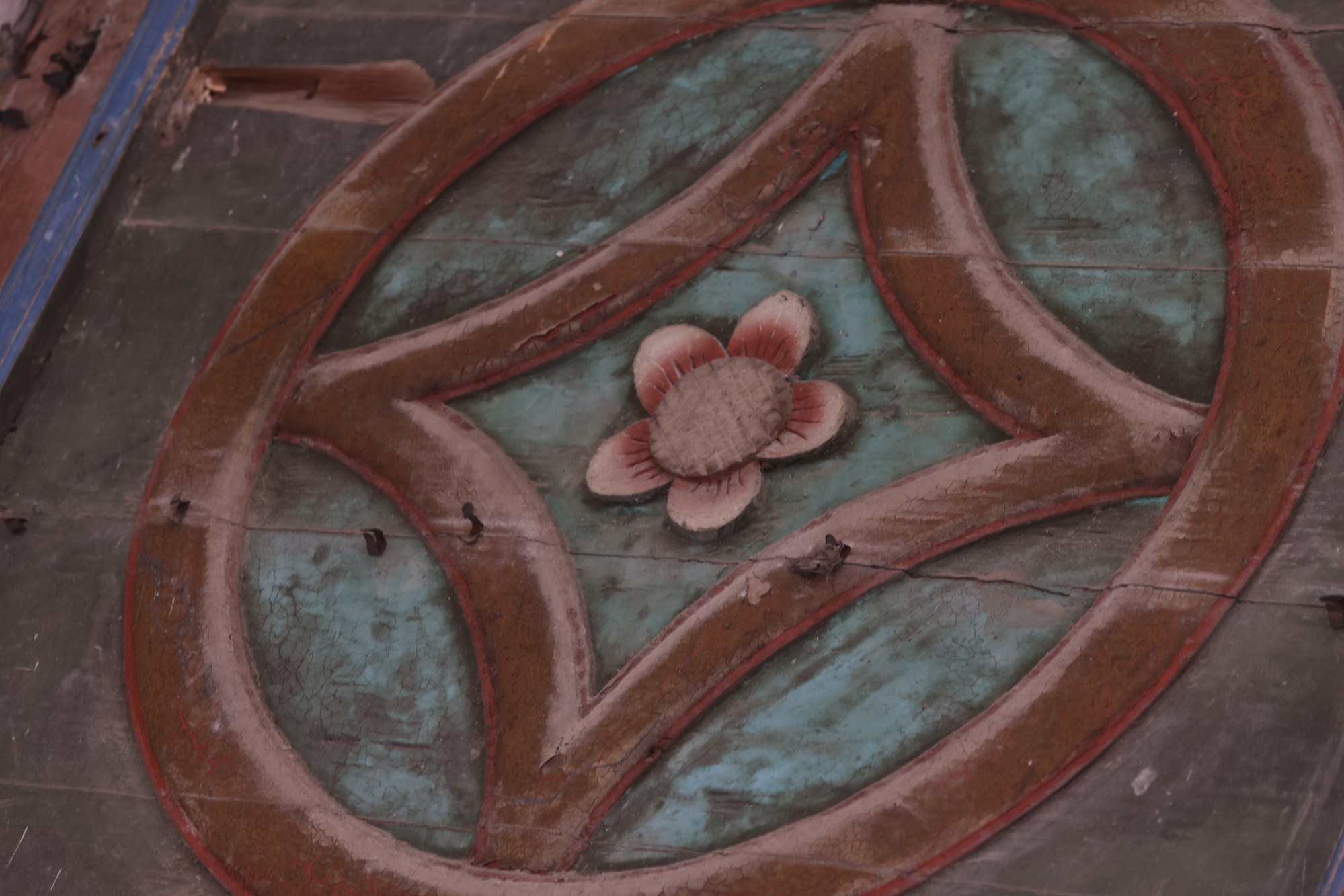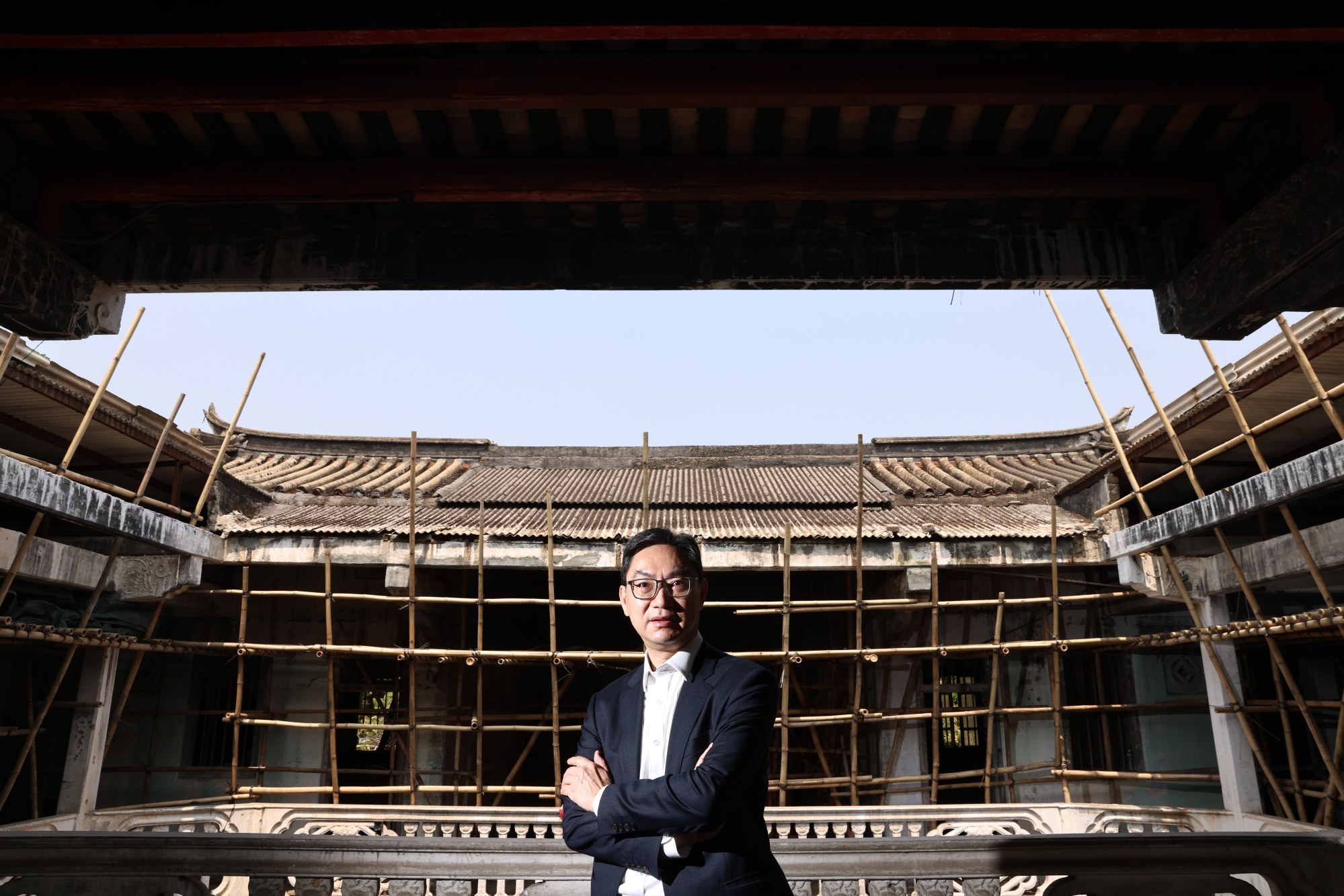
Old Hong Kong mansion set to get new lease of life with conservation project tied to nearby transitional housing scheme
- Built in the 1930s by a Hakka gold merchant, the 27-room Kong Ha Wai ended up being used as a factory, landscape nursery and warehouse
- Developer is consulting professionals to examine ways to restore the structure and architectural features of the building
Veteran Hong Kong filmmaker Alex Cheung Kwok-ming never imagined he would once again step into Kong Ha Wai, a historic mansion in rural Yuen Long, and revisit his childhood memories after he was unable to enter the site two decades ago.
The 27-room mansion, built by a Hakka gold merchant for his family in the 1930s, had seen better days, having survived second world war and undergone big alterations after being used for factory operations decades ago. Now a major property developer is conserving the building for community use to complement a sizeable social housing project nearby.
“It was an extraordinary experience living there,” Cheung, 69, said. “The house was huge for me, especially when I was a kid. I felt like I was living in a mansion in an ancient Chinese drama.”

Back in the 1950s, from the age of seven, Cheung lived in Kong Ha Wai for two years with his grandmother and two siblings. He played in the garden with other children, and also liked picking vegetables and tomatoes at the roadside.
But when he returned to the site with his wife and daughter 20 years ago, they were shocked to find it had been turned into a factory, which he described as foul and unpleasant, and a waste of a beautiful building.
Hong Kong heritage officials reviewing 6,000 buildings that ‘deserve another look’
Henderson Land Development, the current owner of Kong Ha Wai, plans to spend HK$20 million to HK$30 million on conserving the grade-three historic building, which stands on a 53,000 sq ft site. It is the developer’s first conservation project.
The company is consulting professionals to examine ways to restore the structure and architectural features of the building, which has been seriously altered, and is looking for former residents to reconstruct its history. Cheung, known for groundbreaking 1980s films Man on the Brink and Twinkle Twinkle Little Star, is one of three it has found so far.

“We hope this mansion will form a new community together with the housing site nearby and provide suitable community services for residents and disadvantaged in the district,” Henderson Land chairman Martin Lee Ka-shing said. “This will give a new lease of life to the mansion, which is so full of culture and history.”
The firm is considering options such as setting up art exhibitions and a cafe in Kong Ha Wai. It might also provide tutorial lessons for children from families in transitional housing.
According to the team and information from the Antiquities and Monuments Office, Kong Ha Wai was built by Hakka merchant Wong Fong-kiu as a family home between 1933 and 1936. It comprises a two-storey main block with 27 rooms, servants’ quarters, a gate entrance, and a garden with fish ponds.
Wong’s Chinese-Indonesian identity was reflected in the mix of Chinese and Western architectural styles. For instance, the entrance is supported by two tall Tuscan columns with three arched openings, while the pediment is decorated with mouldings of auspicious birds, lions, dragons and flowers. The building also incorporated feng shui features, including a symmetrical design and coin-shaped

windows.
The merchant included various security features including a secret tunnel, loopholes for guns, and watchtowers, and the residence was constructed of concrete and green bricks using the advanced technology of its day.

The Wong family left their home during the Japanese occupation of Hong Kong in the early 1940s. The building was later used as a temporary police station. The family returned in 1953, and rented out rooms on the ground floor while using the first floor for themselves.
Historic Hong Kong reservoir saved from the wrecking ball gets grade one protected status
The building was used as a factory for paper, plastic flowers and polyfoam products, and as a landscape nursery and warehouse in the 1970s. The family emigrated, but one of Wong’s sons remained until he sold the site in 1997.
The Kong Ha Wai restoration will complement a transitional housing project to help people waiting for years for public housing. Under the scheme, 2,000 modular housing units will be built to benefit 40,000 people over seven years, on land in Kam Tin, Yuen Long.

Henderson, one of the city’s largest private developers, has rented out the land to the government for seven years for a nominal fee of HK$1. The company is responsible for the initial planning and site preparation works, while construction, tenant selection and daily operations of the housing project will be left to Pok Oi Hospital, a charity.
The first phase of renovations is expected to be finished by the fourth quarter of 2022, a few months after residents move into the transitional housing. An entrance fee may be collected from visitors.
Henderson executive director Augustine Wong ho-ming said the site would eventually be developed for private housing in the long term, but the company was still waiting to get a clearer picture of overall development in the nearby area before deciding on later use.
“This project is a four-win solution at this stage, which benefits the residents, the government, the public and us,” he said.

